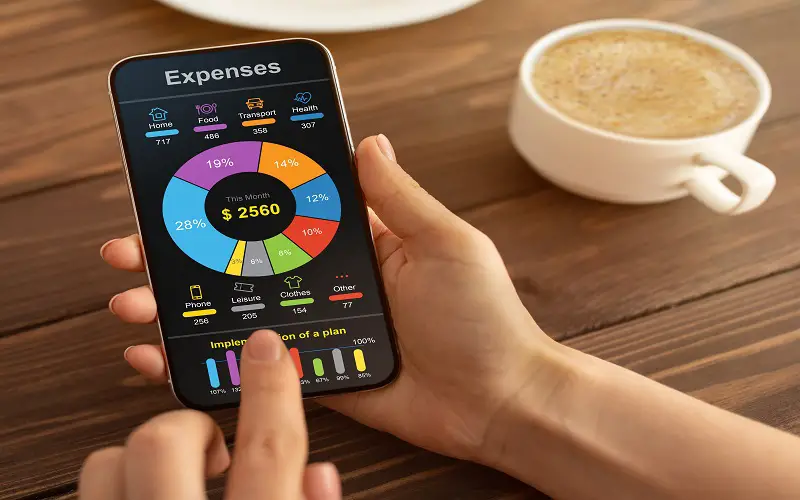Navigating the nuances of a personal budget is complicated; hence, mostly overlooked by many people. People are often a week from financial trouble if their income ever stops coming. Many times, when a man or a woman becomes incapacitated and cannot work, they will find it incredibly difficult to pay bills (and this is regardless of income brackets). When learning how to build a financial app, you must understand that such apps should simplify monthly budgeting and help in wealth management, sharing expenses, and debt repayment. Everyone needs a budget app – Everyone spends! Let’s explore how to make a budget app (also try to check other articles on this topic at the link above).
How to Build a Financial App: Why Are Budget Apps Popular?
The Global Pandemic forced people to stay at home and think about, amongst other things, budget and financial control management. Also, with Gen Z growing into adulthood, budget apps have become commonplace because Gen Z are the only ones who are incredibly convenient with digital applications. According to a survey by National Payroll Week, 34% of Americans will not be able to meet all their financial obligations if there is a one-week pay delay. Let’s explore why budget apps are going mainstream and why it might be a good idea to develop a budget app.
- Budget apps help people prepare for upcoming and predictable expenses like mortgage, house maintenance expenses, and taxes.
- Helps people save from their income and have sufficient funds for emergencies
- Helps people save for extra expenses or financial goals like buying a car, vacation, or a wedding
- Helps people track spending and plug waste.
- With a budget app, users can track due dates for bills and plan or save down for recurring bills like Netflix subscriptions.
- Helps people share spending patterns with partners.
How to Make a Financial App: Exploring Other Finance Apps
The categories of apps we will explore have unique functionalities and excellent UX. When you want to build a budget app, you should download each of these apps and experience their USPs.
Budgeting Apps
Budgeting apps help people manage personal budgets. They work by integrating different bank accounts and help users track spending and categorize expenses. With budgeting apps, you can easily analyze how you spend and what you buy.
Mint: Mint helps you categorize your transactions through your synced back accounts and alerts you when you exceed your monthly budget or budget in a particular category.
Spendee: Spendee helps you track cash flow and sets up a smart budget to curb spending habits. You can set different categories and assign a budget to them. You can also save in multiple currencies.
YNAB (You Need A Budget) is a budgeting app that helps you save, spend wisely, and get out of debt. It’s available on Android, iOS, and Desktop.
Sharing Finance Apps
When you marry or are in a committed relationship, you must be open with your finances. Money is one of the leading causes of divorce. There are apps that help couples stay ahead of their finances.
Zeta: Zeta recognizes the unique needs of couples, from newlyweds to decade-old partners. With Zeta, couples can use a free joint account, track spending, create budgets, and manage bills.
Features of Budgeting Apps
Account Creation: The account creation process should be seamless and take no more than 5 minutes. However, you must take verification seriously. A budget app accesses bank accounts, so you need ultra-grade security to protect user data.
User Profile and Dashboard: A user profile and/or a dashboard allows users to personalize their accounts. Users can put their names or usernames, profile pictures, and even avatars (you can put a little bit of fun since finance is a serious matter).
Transaction Tracking: Users should be able to track income, expenses, and allowances and check spending history across multiple bank accounts. A budgeting app should be holistic and help users see the bigger picture.
Graphical Representation of Spending: Charts and graphs are an excellent way to show users how much they spend. When you create your own budget app, you can input charts, graphs, and analyses to make data more appealing.
Categories: A budget app should have multiple categories like food, travel, water bill, house, college savings, and emergency savings. This way, people can track each category, spend within category limits and control their finances properly.
Scan bills and receipts: With cash payments, users want to be able to scan receipts and bills so that they can track the expense without manually inputting the spending.
Push and email notifications: A budget app should notify users when they exceed the budget in a category. Other notifications include possible security breach notifications, suspicion of fraud on account notifications, and so forth.
Export data: Users should be able to export data and receive it as an email. Formats should include CSV and PDF.
Synchronization and backup: Users should be able to sync apps on different devices. And also on a desktop. Users should also be able to back up their budgeting apps, just in case they change phones.
Set goals: A financial app should help you set and execute financial goals. Do you want to buy a new car or build a rental property? Whatever your goals app, your budgeting app should have goal-setting functionality, including gamification.
Other features include a currency converter, shopping list, wealth management, and loan facilitation.
Conclusion
When learning how to build a financial app, you need to consider many factors. Tech stack, market research, budget app USP, and core and advanced functionalities are some of the factors you must consider. An app must appeal to your target audience, and with budget apps, app functionalities are extremely important.




